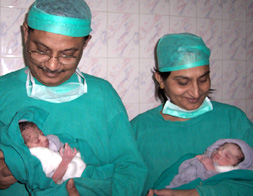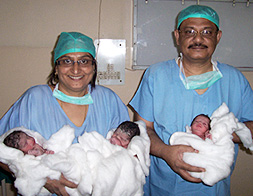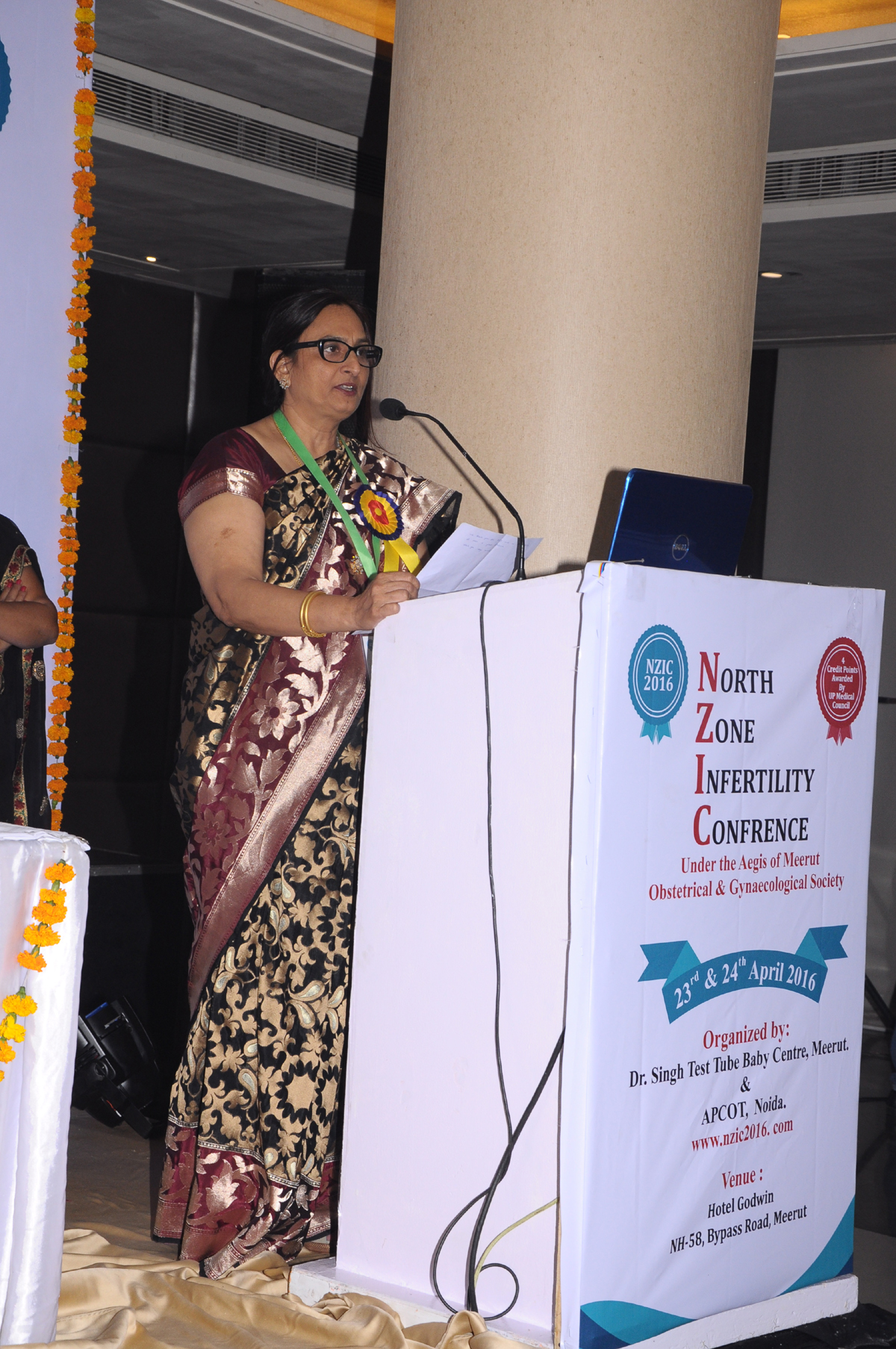What is SURROGACY?
ljksxslh ,d ,slk tfj;k gS tks fdlh dks Hkh larku dh [kq'kh gkfly djus esa enn djrk gSA bl ysVsLV VsfDud dks viukdj vki Hkh ekrk&firk gksus dk lq[k Hkksx ldrs gSaA th gka] ljksxslh ,d efgyk vkSj ,d naifr ds chp dk ,d ,xzhesaV gksrk gS] tks viuk [kqn dk cPpk pkgrk gSA lkekU; 'kCnksa esa vxj dgs rks ljksxslh dk eryc gS fd cPps ds tUe rd ,d efgyk dh ^fdjk, dh dks[k*A
;wa rks ljksxslh dh VsfDud mu yksxksa ds fy, cukbZ xbZ gS ftu yksxksa dks [kqn ds cPps iSnk djus esa eqf'dysa vkrh gSA dHkh fdlh dks cPps dks tUe nsus esa dfBukbZ vkrh gS] rks dHkh ckj&ckj xHkZikr gks jgk gks ;k fQj ckj&ckj vkbZoh,Q rduhd Qsy gks jgh gksA tks efgyk fdlh vkSj naifr ds cPps dks viuh dks[k ls tUe nsus dks rS;kj gks tkrh gS mls gh ^ljksxsV enj* ds uke ls tkuk tkrk gSA
A surrogacy arrangement or surrogacy agreement is the carrying of a pregnancy for intended parents.
Surrogacy is an arrangement in which a woman carries and delivers a child for another couple. Surrogacy involves the transfer of one or more fertilized embryos derived from the infertile woman’s eggs and her partner’s sperm into the uterus of a surrogate. In this case, the surrogate provides a host womb but does not contribute genetically to the baby.

ljksxslh nks çdkj ds gSa&
VªsfM'kuy ljksxslh
bl ljksxslh esa lcls igys firk ds 'kqØk.kqvksa dks ,d vU; efgyk ds vaMk.kqvksa ds lkFk fu"ksfpr fd;k tkrk gS] ftlesa tSusfVd laca/k flQZ firk ls gksrk gSA
tsLVsa'kuy ljksxslh
blesa ekrk&firk ds vaMk.kq o 'kqØk.kqvksa dk esy ij[kuyh fof/k ls djok dj H:.k dks ljksxsV enj dh cPpsnkuh esa çR;kjksfir dj fn;k tkrk gSA bl fof/k esa cPps dk tSusfVd laca/k ekrk&firk nksuksa ls gksrk gSA bl çdkj dh ljksxslh esa] ljksxsV eka dk cPps ds lkFk dksbZ Hkh vkuqoaf'kd laca/k ugha gksrk gSA bl çfd;k esa ljksxsV eka ds vaMs dk bLrseky ugha fd;k tkrk gS vkSj tSfod :i ls cPps dk laca/k vaMk nsus okys ;k bfPNr ekrk&firk ls gksrk gSA
lsjksxslh D;ksa pqus
ljksxsV ,d csgrj fodYi gS] [kkldj mu yksxksa ds fy, tks cPpk iSnk djus esa vleFkZ gSaA ljksxsV mu yksxksa ds fy, [kqyk fodYi gS] tks cPps dk bjknk j[krs gSaA ljksxsV rc gksrk gS tc ,d efgyk ¼ÞljksxsV ekaß½ vkids fy, ,d cPps dks tUe nsrh gSA mldk cPps ij dksbZ vf/kdkj ugha gksrk gS vkSj bl rjg cPpk] tSls gh iSnk gksrk gS] dkuwuh rkSj ij mldk vf/kdkj ugha gksxkA
How does SURROGACY WORK?
Full surrogacy (also known as Host or Gestational) - Full surrogacy involves the implantation of an embryo created using either:
1. The eggs and sperm of the intended parents
2. A donated egg fertilised with sperm from the intended father
3. An embryo created using donor eggs and sperm.
Partial surrogacy (also known Straight or Traditional) - Partial surrogacy involves sperm from the intended father and an egg from the surrogate. Here fertilisation is (usually) done by artificial insemination or intrauterine insemination (IUI).

WHO NEEDS SURROGACY ?
Surrogacy is intended for women with
1. Diseased uterus / absent uterus
2. Repeated implantation failure / abortions
3. Medical inability to undergo stress of pregnancy and labour







